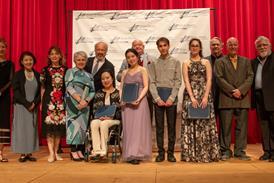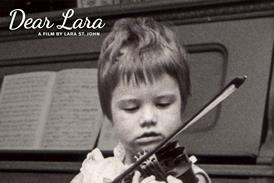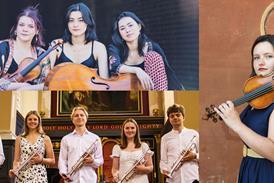- News
- For Subscribers
- Student Hub
- Playing Hub
- Directory
- Lutherie
- Magazine
- Magazine archive
- Whether you're a player, maker, teacher or enthusiast, you'll find ideas and inspiration from leading artists, teachers and luthiers in our archive which features every issue published since January 2010 - available exclusively to subscribers. View the archive.
- Jobs
- Shop
- Podcast
- Contact us
- Subscribe
- School Subscription
- Competitions
- Reviews
- Debate
- Artists
- Accessories
Bay Area bow makers: Bows on the bay

With a large and growing music community, the San Francisco Bay Area became a hotbed of violin and bow making talent in the early 20th century. Raphael Gold tells the stories of the most prominent bow makers of the day
Right from its raucous Gold Rush beginnings in 1848, music was everywhere in San Francisco. Italian immigrants brought European opera, Chinese immigrants brought Cantonese opera and German immigrants brought symphonic traditions. Fiddle music from across the country could be heard in seemingly every corner. A love of string music was stitched into the very fabric of the city, driven by a fledgling society that aspired to high culture. Over the years a multitude of venues proliferated: concert halls; first- and second-class theatres; burlesque theatres; silent movie theatres; saloons; salons; restaurants and vaudeville stages all supported a vibrant scene. These Bay Area musicians relied on luthiers to repair and make their instruments, just as they needed bows to play them. The bow makers who worked here were an integral part of a musical ecosystem that changed dramatically from the time the first such maker arrived in 1876 to the end of World War II in 1945. Here are some of the bow makers who did their part in turning the region from a capital of the Wild West into a destination point for international musicians.
The very first bow maker in the San Francisco Bay Area was Pierre Aloysius Josephs. He was born in 1833 in New York, his father a prominent builder. Moving west with his family, Pierre studied violin in St Louis, Missouri, probably in the early 1850s. He developed a keen interest in violin making around this time. Eventually the family relocated to Elwood, Kansas, where he fought in the Civil War for the Union in 1861, a first lieutenant of the First Regiment Kansas Volunteer Infantry. He registered his profession as ‘jeweler’ in the 1863 Kansas military draft, an exacting and precise art that would inform his skill.
According to the family, he honed his abilities as a violin and bow maker during a series of business trips to Paris between 1864 and 1872, where he spent time at the shop of Jean-Baptiste Vuillaume. This claim is backed by an Ellis Island document from 1864; the influence is also clear in his workmanship. As early as 1870 he was working as a violin maker in St Joseph, Missouri, as listed in the local directory. He worked around St Joseph until 1876, when he boarded the newly incorporated railway line from St Louis to San Francisco with his nonagenarian parents, his second wife and their seven children. At first he settled in Oakland, California, moving to bustling San Francisco in 1877. He soon set up as a violin and bow maker at 1412 Kearny Street, in a three-generation household…
Already subscribed? Please sign in
Subscribe to continue reading…
We’re delighted that you are enjoying our website. For a limited period, you can try an online subscription to The Strad completely free of charge.
* Issues and supplements are available as both print and digital editions. Online subscribers will only receive access to the digital versions.




























